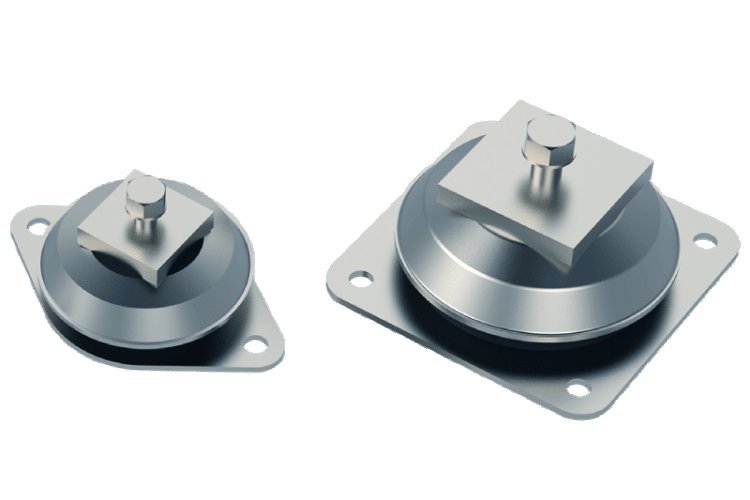Impact of Material Choice on the Performance of Rubber Mounts
Explore how the choice of materials affects the performance of rubber mounts in machinery. Learn about the best options for optimal vibration control.

Choosing the right material for rubber mounts is crucial in determining their effectiveness in vibration control and noise reduction in various types of machinery. This article delves into the significant impact that material choice has on the performance and longevity of rubber mounts, helping you make informed decisions for your equipment.
Introduction to Rubber Mounts
Rubber mounts are essential components used in various industrial and residential settings to isolate vibrations and minimize noise. Their role is critical in protecting sensitive machinery and ensuring smooth operations.
Why Material Choice Matters
The material of a rubber mount directly influences its ability to absorb and dampen vibrations. Different materials have varying properties like elasticity, resistance to temperature changes, and durability, which affect the mount's performance.
Elasticity and Stiffness
The elasticity and stiffness of the rubber material determine how well it can absorb shocks and vibrations. Softer materials may offer better vibration absorption, while stiffer ones provide more stability.
Temperature Resistance
In environments with extreme temperatures, the material's ability to withstand heat or cold without degrading is vital. Some rubber materials perform better in high temperatures, while others are more suited to colder climates.
Common Materials Used in Rubber Mounts
Several materials are commonly used in the production of rubber mounts. Each has its advantages and challenges based on the application.
Natural Rubber (NR)
Natural rubber is known for its excellent elasticity and vibration absorption. However, it can degrade quickly when exposed to oils, ozone, and certain chemicals.
Neoprene (CR)
Neoprene is a synthetic rubber with good chemical stability and flexibility. It is resistant to weathering and performs well in a wide range of temperatures.
Silicone Rubber
Silicone rubber excels in high-temperature applications and has good resistance to aging and weathering. Its damping properties are less than natural rubber but still adequate for many uses.
Selecting the Right Material for Your Application
Choosing the right material for your rubber mounts depends on several factors related to your machinery and the environment it operates in.
Assessing the Operating Environment
Consider the temperatures, chemicals, and physical stresses that the mounts will face. For instance, silicone might be preferable in high-temperature settings, while neoprene could be ideal for chemical resistance.
Load and Vibration Characteristics
The weight and vibration frequency of the machinery also play a role. Heavier equipment may require stiffer mounts to maintain stability.
Impact on Performance and Lifespan
The material choice not only affects the immediate performance of rubber mounts but also their longevity and maintenance needs.
Performance Consistency
High-quality materials ensure consistent performance over time, maintaining effective vibration control and noise reduction.
Maintenance and Replacement Frequency
Durable materials reduce the need for frequent replacements, lowering maintenance costs and downtime for machinery.
Innovations in Rubber Mount Materials
The development of new materials and composites has led to significant improvements in rubber mount technology. These innovations offer enhanced performance in specific conditions.
Polyurethane and Hybrid Materials
Polyurethane combines the elasticity of rubber with the durability of plastics, making it suitable for harsh conditions. Hybrid materials may include additives to improve UV resistance or anti-static properties.
Case Studies: Material Choice in Action
Examining real-world applications of rubber mounts with different materials can provide insight into their effectiveness.
Automotive Industry
In the automotive sector, natural rubber mounts are often used for engine mounts due to their excellent shock absorption. However, for high-temperature areas near the exhaust, silicone mounts might be preferred.
Industrial Machinery
In heavy industrial settings, polyurethane mounts are favored for their strength and durability under large loads and abrasive conditions.
Conclusion
By carefully selecting the appropriate material for your rubber design mounts, you can significantly enhance the stability, performance, and lifespan of your machinery. Understanding the unique properties of each material and how they align with your application's needs is key to achieving optimal vibration control and noise reduction.
What's Your Reaction?











![Wireless Connectivity Software Market Size, Share | Statistics [2032]](https://handyclassified.com/uploads/images/202404/image_100x75_661f3be896033.jpg)




